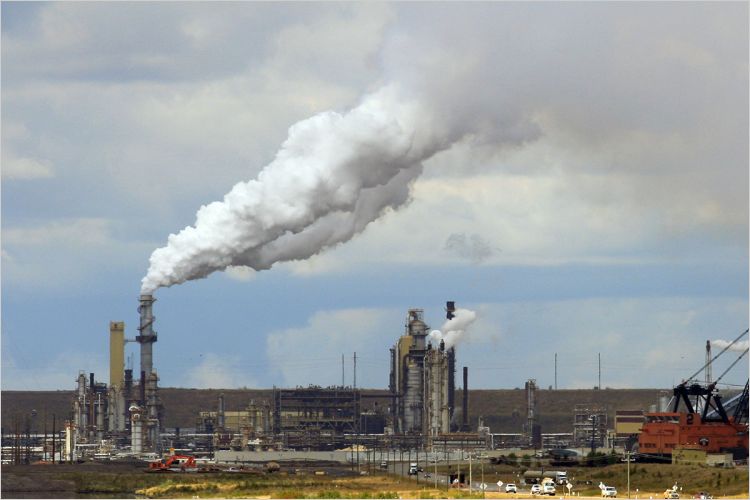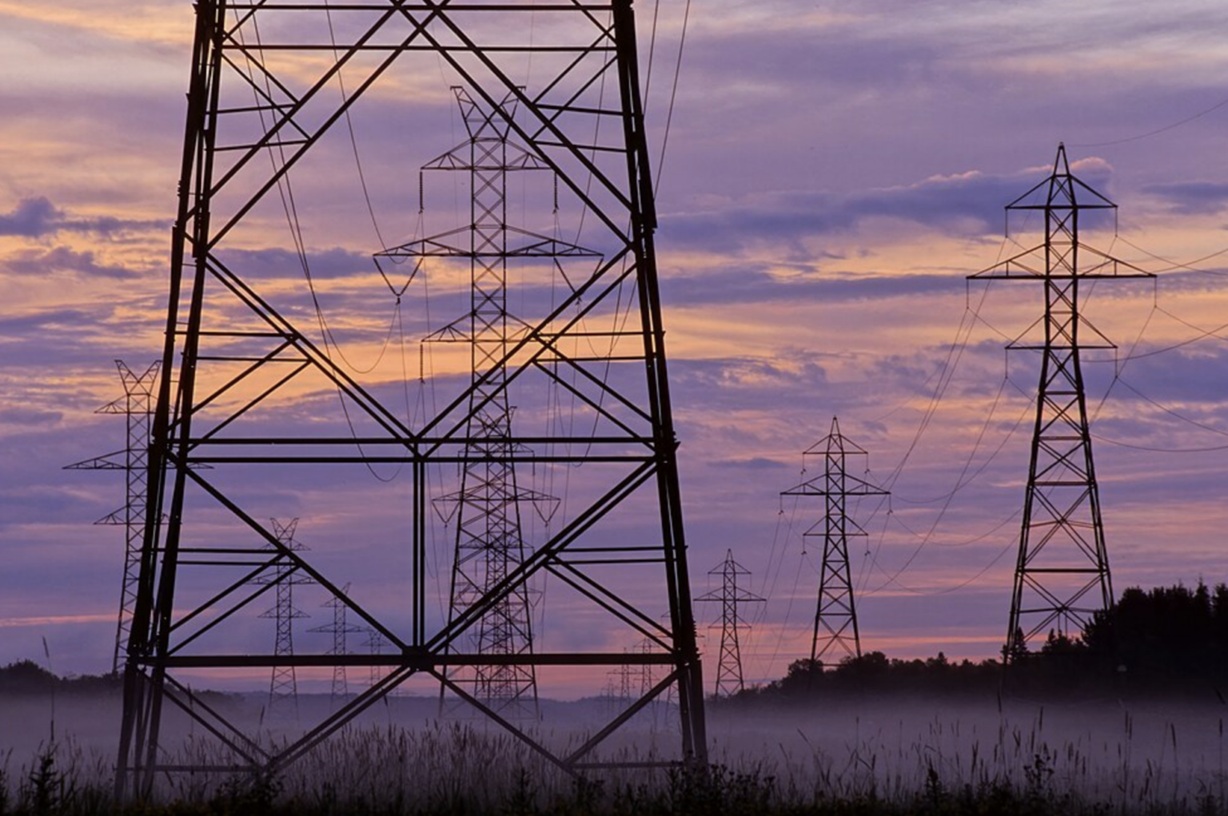Canada could use thermal infrastructure to turn wasted heat emissions into energy – The Conversation

Report on Decarbonizing Canada’s Building Sector Through Thermal Energy Networks
Introduction: Aligning Infrastructure with Sustainable Development Goals
Canada’s building sector represents a significant challenge and a substantial opportunity for the nation to advance its commitments to the United Nations Sustainable Development Goals (SDGs). Buildings are the third-largest source of greenhouse gas (GHG) emissions nationally and the single highest source in major cities like Vancouver, Toronto, and Calgary. This directly impedes progress on SDG 13 (Climate Action) and SDG 11 (Sustainable Cities and Communities). This report outlines a strategic infrastructure initiative—the development of thermal energy networks—to capture and reuse waste heat, thereby creating a pathway toward net-zero emissions in the building sector. This approach builds on Canada’s legacy of successful infrastructure projects and offers a multi-faceted solution that supports SDG 7 (Affordable and Clean Energy), SDG 9 (Industry, Innovation, and Infrastructure), and SDG 8 (Decent Work and Economic Growth).
The Imperative for a New Energy Transition
Historical Context and Current Limitations
Canada’s energy infrastructure has undergone significant transitions. The shift away from wood, coal, and oil heating to natural gas following the 1970s oil crisis was a major infrastructure undertaking that initially halved heating emissions. However, reliance on natural gas, a fossil fuel, is incompatible with long-term climate targets. Recent analysis confirms that its continued use presents a barrier to achieving net-zero emissions, necessitating a new transition to align with SDG 13 (Climate Action).
The Urban Emissions Challenge
The concentration of emissions from buildings in urban centers underscores the urgency of developing sustainable solutions for cities. To meet the objectives of SDG 11 (Sustainable Cities and Communities), which calls for making human settlements inclusive, safe, resilient, and sustainable, a fundamental change in how buildings are heated and cooled is required.
A Pathway to Clean Energy (SDG 7) and Innovative Infrastructure (SDG 9)
The Thermal Network Solution
A significant opportunity exists to develop a new form of infrastructure focused on capturing, storing, and sharing waste heat. Thermal networks, consisting of insulated underground pipelines, can collect excess thermal energy from various sources and distribute it to heat and cool buildings. This innovative approach directly supports SDG 9 by building resilient infrastructure and fostering innovation.
Abundant Sources of Waste Heat
The potential for heat recovery is vast and widely distributed. In Ontario alone, the amount of wasted heat energy exceeds the total amount of natural gas used for residential heating. This creates a new, localized energy resource, contributing to SDG 7 (Affordable and Clean Energy). Key sources include:
- Industrial facilities, including factories and power plants.
- Commercial operations such as data centers, grocery stores, and laundromats.
- Community infrastructure like sewage systems and hockey arenas.
International Precedents for Success
The viability of large-scale thermal networks is proven. Motivated by the 1970s oil crisis, other cold-climate nations have successfully implemented this technology:
- Denmark: Thermal networks heat two-thirds of homes, supported by long-term financing, subsidies, and controlled consumer pricing.
- Sweden: District heating systems supply energy to half of the nation’s homes.
- United States: At least seven states are establishing thermal networks, with New York’s Utility Thermal Energy Network and Jobs Act enabling public utilities to own and operate them under public oversight.
These examples provide a clear roadmap for Canada to develop its own systems, tailored to its unique regional needs.
Economic and Social Co-Benefits
Driving a Just Transition and Economic Growth (SDG 8)
The construction and operation of thermal networks can stimulate the economy and support a just energy transition, a core component of SDG 8 (Decent Work and Economic Growth). This national project would generate significant employment opportunities, including:
- Utilizing the skills of oil-well drillers from Alberta to construct borehole heat-storage systems.
- Creating advanced manufacturing jobs for the production of heat-recovery pumps.
- Driving demand for Canadian steel in the manufacturing of pipelines.
Advancing Responsible Production (SDG 12) and Energy Sovereignty
By treating waste heat as a valuable resource, thermal networks embody the principles of a circular economy, directly contributing to SDG 12 (Responsible Consumption and Production). This shift would also reduce Canada’s reliance on volatile global energy markets, thereby increasing national energy sovereignty and economic independence.
Recommendations for Implementation
Government Leadership and Strategic Investment
Realizing this opportunity requires decisive leadership from all levels of government. A regulated approach, similar to how past electrical and water networks were financed, could amortize the one-time infrastructure costs over decades. Funding can be secured through public-private partnerships, with investments from public banks and pension funds seeking secure, long-term returns.
Overcoming Systemic Barriers
Efforts to implement thermal networks face several obstacles that must be addressed proactively:
- Institutional inertia within government and utilities.
- The strong influence of the incumbent oil and gas industry.
- Limited public awareness of the technology’s potential.
- A policy tendency to view electrification as the sole solution for building decarbonization.
Pushing past these barriers is essential for Canada to leverage its history of infrastructure excellence and build a climate-friendly, economically robust future in alignment with its global sustainability commitments.
1. Which SDGs are addressed or connected to the issues highlighted in the article?
SDG 7: Affordable and Clean Energy
The article’s central theme is the transition from fossil fuel-based heating (natural gas) to a cleaner alternative: capturing and reusing waste heat. This directly addresses the goal of increasing the share of clean and renewable energy sources in the energy mix. It discusses creating a new infrastructure for “net-zero” heating, which is a core component of clean energy.
SDG 9: Industry, Innovation, and Infrastructure
The article explicitly calls for building a “new form of infrastructure: capturing, storing and sharing the massive amounts of heat lost from industry.” It advocates for developing resilient and sustainable infrastructure (thermal networks) and upgrading industrial processes to be more resource-efficient by capturing waste heat. The text mentions that “Canada has built railways, roads, clean water systems, electrical grids,” and this new thermal infrastructure would build on that tradition.
SDG 11: Sustainable Cities and Communities
The problem is framed within an urban context, stating that in cities like “Vancouver, Toronto and Calgary, buildings are the single highest source of emissions.” The proposed solution of thermal networks is a city- or community-scale system designed to reduce the environmental impact of urban areas by decarbonizing the building sector.
SDG 13: Climate Action
The primary motivation for the proposed changes is to combat climate change. The article repeatedly mentions the need to reduce “greenhouse gas emissions,” “decarbonize,” and achieve “net-zero” in the building sector. It proposes integrating climate change measures into national policy by urging government leadership to build thermal networks as a climate solution.
SDG 8: Decent Work and Economic Growth
The article suggests that building this new infrastructure would create economic opportunities. It states that a “new market for heat-recovery pumps would create good advanced-manufacturing jobs” and that the project could “provide employment opportunities for those displaced by the transition away from fossil fuels,” promoting a “just energy strategy.”
2. What specific targets under those SDGs can be identified based on the article’s content?
SDG 7: Affordable and Clean Energy
- Target 7.2: By 2030, increase substantially the share of renewable energy in the global energy mix. The article advocates for replacing natural gas with waste heat, which functions as a recycled/renewable energy source for heating, thereby increasing its share in Canada’s energy consumption.
- Target 7.3: By 2030, double the global rate of improvement in energy efficiency. The proposal to capture and reuse waste heat from industries, data centres, and even restaurants is a direct measure to improve energy efficiency on a massive scale, as this energy is currently “dumped.”
SDG 9: Industry, Innovation, and Infrastructure
- Target 9.1: Develop quality, reliable, sustainable and resilient infrastructure… to support economic development and human well-being. The article’s main proposal is to “build thermal networks, corridors and storage to capture and distribute heat,” which is a call to develop new, sustainable infrastructure.
- Target 9.4: By 2030, upgrade infrastructure and retrofit industries to make them sustainable, with increased resource-use efficiency and greater adoption of clean and environmentally sound technologies. The article describes how thermal networks would capture “leftover heat from factories and nuclear and gas-fired power plants,” effectively retrofitting these industries to be more resource-efficient.
SDG 11: Sustainable Cities and Communities
- Target 11.6: By 2030, reduce the adverse per capita environmental impact of cities, including by paying special attention to air quality and municipal and other waste management. The article directly addresses this by targeting the “single highest source of emissions” in many Canadian cities—buildings—aiming to reduce their environmental impact through cleaner heating.
SDG 13: Climate Action
- Target 13.2: Integrate climate change measures into national policies, strategies and planning. The article calls for “substantial leadership from all levels of government” and cites policy examples like New York’s “Utility Thermal Energy Network and Jobs Act” as models for Canada to follow, thus integrating climate action into national strategy.
SDG 8: Decent Work and Economic Growth
- Target 8.2: Achieve higher levels of economic productivity through diversification, technological upgrading and innovation. The article points to the creation of a “new market for heat-recovery pumps” and jobs for “oil-well drillers from Alberta” to dig storage systems as a form of economic diversification and technological upgrading.
3. Are there any indicators mentioned or implied in the article that can be used to measure progress towards the identified targets?
SDG 7: Affordable and Clean Energy
- Implied Indicator: Percentage of homes heated by clean/recycled energy. The article states that “three-quarters of Ontario homes… are heated by natural gas” and that thermal networks heat “half the homes in Sweden and two-thirds of homes in Denmark.” Progress could be measured by the change in this percentage in Canada.
- Implied Indicator: Amount of waste heat recovered. The article notes, “In Ontario, the amount of energy we dump in the form of heat is greater than all the natural gas we use to heat our homes.” An indicator would be the total thermal energy (in joules or kWh) captured and reused annually.
SDG 9: Industry, Innovation, and Infrastructure
- Implied Indicator: Investment in new sustainable infrastructure. The article mentions that the cost could be amortized over decades through “public-private partnerships, with major investments from public banks and pension funds.” The total dollar amount invested would be a key indicator.
- Implied Indicator: Length of thermal network pipelines constructed. Progress in building this new infrastructure could be measured in kilometers of pipelines laid, similar to how road or railway networks are measured.
SDG 11: Sustainable Cities and Communities
- Mentioned Indicator: Greenhouse gas emissions from the building sector. The article identifies buildings as the “third-largest source of greenhouse gas emissions in Canada.” A direct indicator of progress would be the annual reduction of GHG emissions (in tonnes of CO2 equivalent) from this sector.
SDG 13: Climate Action
- Mentioned Indicator: Adoption of policies and legislation promoting decarbonization. The article references New York’s “Utility Thermal Energy Network and Jobs Act” as a model. An indicator for Canada would be the number of federal or provincial acts, regulations, or strategies established to support thermal networks.
SDG 8: Decent Work and Economic Growth
- Implied Indicator: Number of new jobs created in the green energy sector. The article suggests the transition would create “good advanced-manufacturing jobs” and employment for displaced fossil fuel workers. An indicator would be the number of full-time equivalent jobs created in designing, building, and maintaining thermal networks.
4. Table of SDGs, Targets, and Indicators
| SDGs | Targets | Indicators Identified in Article |
|---|---|---|
| SDG 7: Affordable and Clean Energy | 7.2: Increase substantially the share of renewable energy.
7.3: Double the global rate of improvement in energy efficiency. |
– Percentage of homes/buildings heated by thermal networks (waste heat). – Amount of waste heat (in joules or kWh) captured and reused annually. |
| SDG 9: Industry, Innovation, and Infrastructure | 9.1: Develop quality, reliable, sustainable and resilient infrastructure.
9.4: Upgrade infrastructure and retrofit industries to make them sustainable. |
– Total investment ($) in thermal network infrastructure. – Kilometers of thermal network pipelines constructed. – Number of industrial facilities retrofitted to capture waste heat. |
| SDG 11: Sustainable Cities and Communities | 11.6: Reduce the adverse per capita environmental impact of cities. | – Reduction in greenhouse gas emissions (tonnes of CO2e) from the urban building sector. |
| SDG 13: Climate Action | 13.2: Integrate climate change measures into national policies, strategies and planning. | – Number of national/provincial policies, acts, or strategies adopted to support thermal energy networks. |
| SDG 8: Decent Work and Economic Growth | 8.2: Achieve higher levels of economic productivity through diversification, technological upgrading and innovation. | – Number of new jobs created in manufacturing, construction, and operation of thermal networks and heat-recovery systems. |
Source: theconversation.com

What is Your Reaction?
 Like
0
Like
0
 Dislike
0
Dislike
0
 Love
0
Love
0
 Funny
0
Funny
0
 Angry
0
Angry
0
 Sad
0
Sad
0
 Wow
0
Wow
0

























_1.png?#)





















































